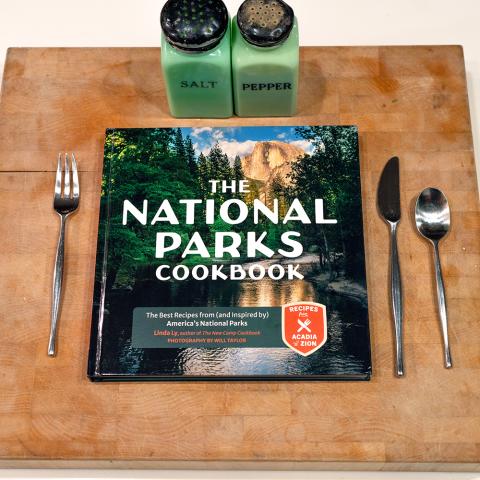
Why the declining interest in backcountry travel in the National Park System?/Bob Mishak
Glance through National Park System visitation statistics for a few years, and some puzzling numbers surface. For example: Doesn't anyone like to backpack anymore.
Ok, that was a little hyperbole. There are still a lot of backpackers in the National Park System. Just not as many as there were when Baby Boomers were coming of age.
Overall visitation to the parks in 2014 reached a record 292.8 million. But surprisingly few of those visitors spent a night -- whether in tent, on a boat, or in a lodge -- in the parks.
According to National Park Service statisticians, of those nearly 293 million who came to the parks last year, just 14.1 million stayed overnight. While that's up from the 13.5 million who spent at a night in 2013 -- that year visitation was significantly depressed by the partial government shutdown that closed most park units for 16 days -- it's slightly down from 2012 levels, when 14.3 million visitors stayed the night.
As for backcountry use, in 2014 the Park Service tallied 1.9 million overnight stays, while in 2013 there were 1.7 million, and in 2012 1.8 million. While those numbers seem bullish, they are quite a bit down from the late '70s and early '80s, when a good number of the Baby Boom generation was fit, able, and determined to see -- and sleep in -- the outdoors.
According to the Park Service, in 1979 there were almost 2.4 million backcountry travelers in the parks, or roughly 500,000 more than last year. In 1980, the number again approached 2.4 million.
Why the drop in backcountry camping, at a time when individualism is still going strong, when The North Face is seen on Broadway about as often as it is on the North Rim? That's the $64 million question.
"The NPS stats system just collects the 'how many' part of the equation - we have very little on 'why' except when there are major events, such as closings, re-openings, etc.," says Pam Ziesler, who works with the Park Service's Visitor Use Statistics Program.
Could it be related to fees charged at some national parks for backcountry access? While the small fees charged by some parks might not seem to be an impediment, access to U.S. Forest Service backcountry sites is free, says Kitty Benzar of the Western Slope No-Fee Coalition, and that might be draining some backpackers away from the parks.
Unfortunately, the Forest Service doesn't track backcountry usage like the Park Service does, and so has no easily obtained data that might indicate whether there has been an exodus of backpackers from park lands to forest lands.
Have those fees led you to vistas outside the National Park System?




 Support Essential Coverage of Essential Places
Support Essential Coverage of Essential Places







Comments
Something I never did. I said more and challanged the concept of "too much"
Exactly. And if they are choosing Big Macs and Whoppers, they obviously don't believe it is excessive.
Eric, a couple of years ago I hiked the width of the AT but not the length. LOL. My wifes knees prevent us from taking too long of a hike.
David - enjoyed your comment. A few years ago my wife and I were on the half-mile paved path that leads from the parking lot to the overlook "tower" at Clingmans Dome in the Smokies. We encountered three girls in their late teens or so along that path; they were clearly not dressed for a hike, but had seen a sign along the way for the AT, and had stopped for a discussion.
One of them said something like, "Appalachian Trail? Maybe we should take that! Is it a very long trail?"
We stopped and my wife said something like, "It's over 2,000 miles long!"
After a shocked silence, the reply was "Oh!" Fortunately, that group decided to pass on the AT that afternoon :-)
Exactly. And if they are choosing Big Macs and Whoppers, they obviously don't believe the potential weight gain is excessive.
My point was that everyone chooses. While some of us choose to enjoy the outdoors, others choose to become fat and lazy and soft. Just based upon personal observation, there are a lot of Americans choosing the latter.
What's too much for me is just right for someone else.
And if you don't eat at Burger King or McDonalds, what do you care how many Burger Kings and McDonalds there are. One would be more than you need but the fact that others want them means there aren't "too many".
Back when I was physically capable I never completed the AT. It was a dream and at various times while living on the east coast I did chunks of it. I envy anyone who has made the committment to do it.
Enjoy vicariously
https://youtu.be/d_IFLJYlv4Q
Ec, nice pictures and I'm envious of your accomplishment! How long did it take?